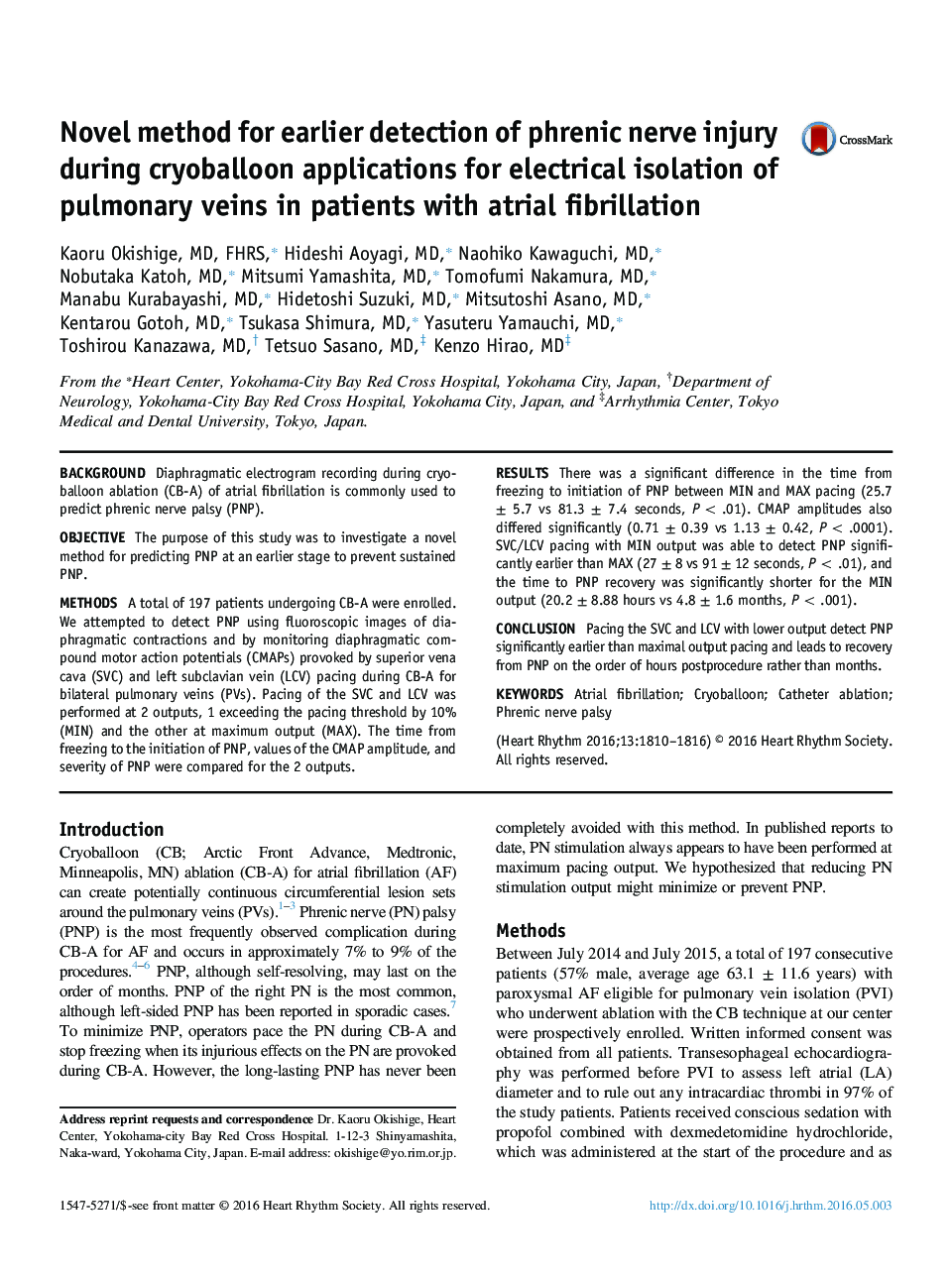| Article ID | Journal | Published Year | Pages | File Type |
|---|---|---|---|---|
| 2921671 | Heart Rhythm | 2016 | 7 Pages |
BackgroundDiaphragmatic electrogram recording during cryoballoon ablation (CB-A) of atrial fibrillation is commonly used to predict phrenic nerve palsy (PNP).ObjectiveThe purpose of this study was to investigate a novel method for predicting PNP at an earlier stage to prevent sustained PNP.MethodsA total of 197 patients undergoing CB-A were enrolled. We attempted to detect PNP using fluoroscopic images of diaphragmatic contractions and by monitoring diaphragmatic compound motor action potentials (CMAPs) provoked by superior vena cava (SVC) and left subclavian vein (LCV) pacing during CB-A for bilateral pulmonary veins (PVs). Pacing of the SVC and LCV was performed at 2 outputs, 1 exceeding the pacing threshold by 10% (MIN) and the other at maximum output (MAX). The time from freezing to the initiation of PNP, values of the CMAP amplitude, and severity of PNP were compared for the 2 outputs.ResultsThere was a significant difference in the time from freezing to initiation of PNP between MIN and MAX pacing (25.7 ± 5.7 vs 81.3 ± 7.4 seconds, P < .01). CMAP amplitudes also differed significantly (0.71 ± 0.39 vs 1.13 ± 0.42, P < .0001). SVC/LCV pacing with MIN output was able to detect PNP significantly earlier than MAX (27 ± 8 vs 91 ± 12 seconds, P < .01), and the time to PNP recovery was significantly shorter for the MIN output (20.2 ± 8.88 hours vs 4.8 ± 1.6 months, P < .001).ConclusionPacing the SVC and LCV with lower output detect PNP significantly earlier than maximal output pacing and leads to recovery from PNP on the order of hours postprocedure rather than months.
